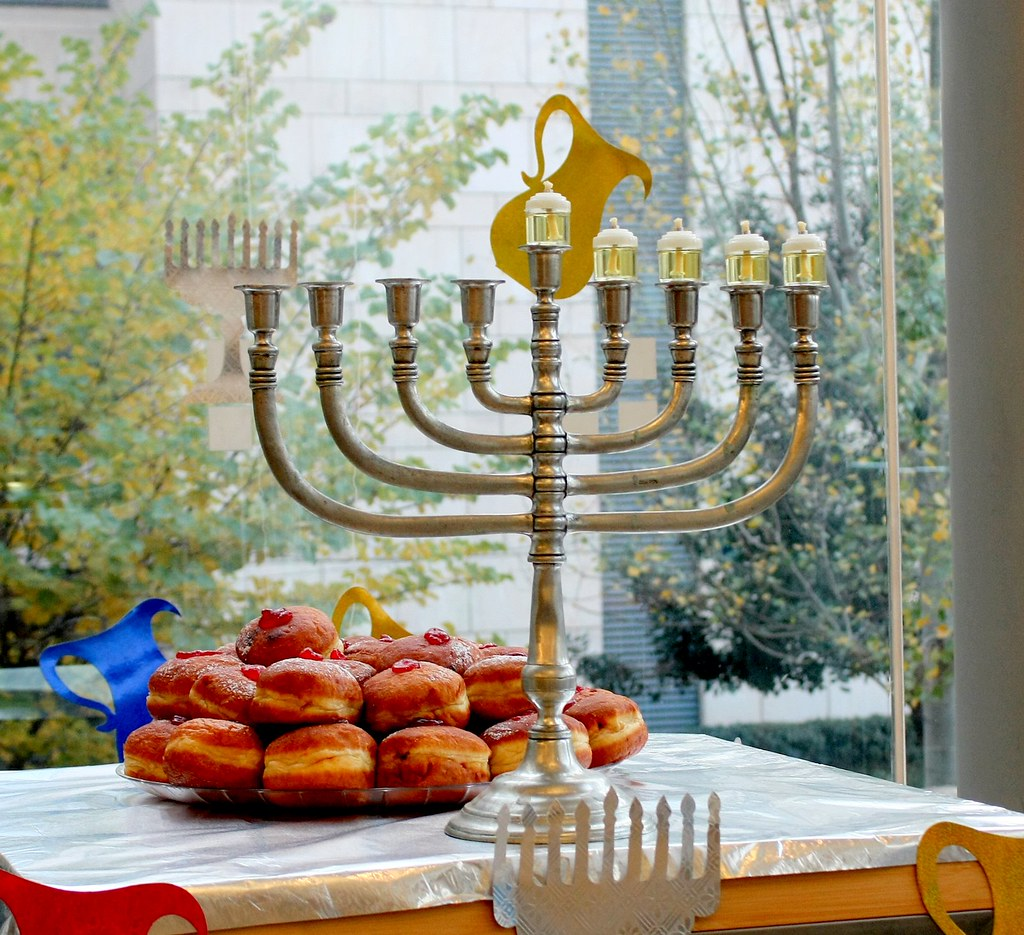Shayna Wilson-Spiro is a senior at Wilton High School. She draws in her free time, has two brothers, and does comic art. She is interested in math and medicine. She is looking forward to expanding the art department for the Forum this year.
8 Common Misconceptions about Hanukkah
How much do you know about the Jewish holiday that takes place each winter? In honor of the ongoing “Festival of Lights,” here are eight common myths about Hanukkah.
December 24, 2022
1. Hanukkah is the most important Jewish holiday.
The story of Hanukkah doesn’t appear in the Jewish Bible. Instead, the classic Hanukkah story is based on the account in the Septuagint, a later Greek translation of the original Hebrew Bible. Although Hanukkah was originally based on a military victory, Rabbis in later centuries transformed it into the “Festival of Lights”. In the 20th century, Hanukkah gained attention because of its proximity to Christmas, creating the emphasis on Hanukkah we are familiar with today. The most religiously important Jewish holidays include Rosh Hashanah, Yom Kippur, and the Shalosh Regalim: Passover, Sukkot, and Shavuot. While all of these holidays include restrictions on work due to their religious importance, Hanukkah does not.
2. The Hanukkah story is boring.
When King Antiochus, ruler of the Syrian Greek Empire, began targeting the Jews and took over the Second Temple, their house of worship, a group of Jewish rebels called the Maccabees (translating to “Hammer”), led by Judah Maccabee, rose up and retook the Temple through guerilla warfare. There they lit the Temple’s menorah, which miraculously burned for eight days, despite the scarcity of oil to fuel it. More details and a description of the actual bloody war that took place can be found at the following link: The History of Hanukkah | My Jewish Learning.
3. Eating latkes and lighting candles are the only Hanukkah traditions.
Although Hanukkah is not a major holiday, there are many associated traditions. Lighting the hanukkiah, the Hanukkah menorah, occurs nightly and is the religious part of the holiday. During this time, children play dreidel, a game of spinning tops. For dinner, latkes, or fried potato pancakes, may be served. Also traditional are fried jelly doughnuts, called sufganiyot (pronounced soof-gon-ee-yote). Fried foods are eaten during Hanukkah because of the importance of oil as a scarce resource in the Hanukkah story. After the candle lighting, children are given chocolate coins called gelt, or sometimes real coins. Few look past the common traditions associated with Hanukkah, but there is no scarcity of unique customs.
4. A hanukkiah and a menorah are always the same things.
It is correct to refer to a hanukkiah as a menorah, but not all menorahs are hanukkiahs. The word “menorah” refers to a larger category of religious candelabras. Menorahs that are not hanukkiahs often have 7 arms instead of the 9 on a hanukkiah. In fact, the menorah lit in the original Hannuka story was most likely not a hanukkiah. A hanukkiah is simply a special menorah used specifically for celebrating Hanukkah.
5. There is no good Hanukkah music.
American holiday concerts tend to play the absolute worst of Hanukkah music, likely because most traditional and Israeli Hanukkah music are not in English. Jewish families sing Hanukkah songs around the hanukkiah each night of the holiday. Here is a link to some songs that are much more interesting and catchy than “I had a Little Dreidel”: https://www.youtube.com/playlist?list=PLrVVsnvfODMRFCw5y5pJnt7XBn14nx6Eq.
6. Hanukkah is always on the same date.
Like other Jewish holidays, Hanukkah is based on the lunar calendar. Since the lunar calendar and Gregorian calendar (the calendar currently used in the Western world) are not in sync, Hanukkah falls on a different Gregorian date each year, although always around the same time of year. Sometimes it is in December, while other times it is celebrated in November.
7. There is one correct way to spell Hanukkah.
Hanukkah comes from the Hebrew word for dedication, חֲנוּכָּה. Since English spellings are transliterations of a Hebrew word, many spellings are correct! The first letter of Hanukkah in Hebrew is a chet, which makes a sound without an English counterpart. This leads to spellings such as “Channukah,” or “Khanukkah.”
8. Blue and white are the official colors of Hanukkah.
Hanukkah doesn’t actually have any official colors. Blue and white, or blue and silver, are traditionally associated with Judaism, as seen on the Israeli flag. These colors have been used throughout Jewish history to represent Judaism. In the 20th century, when Hanukkah rose to prominence as the primary Jewish holiday in American culture, the colors blue and white became symbolic of Hanukkah. There is no religious reason for Hanukkah to be blue and white.
The image of Hanukkah portrayed in popular culture tends to misrepresent the holiday. Although dreidels, menorahs, and latkes are part of Hanukkah, there are many more traditions and customs that add to the meaning of the holiday. Still, it’s important to note that, though it is one of the more well-known holidays, Hanukkah is only a small aspect of Judaism!

